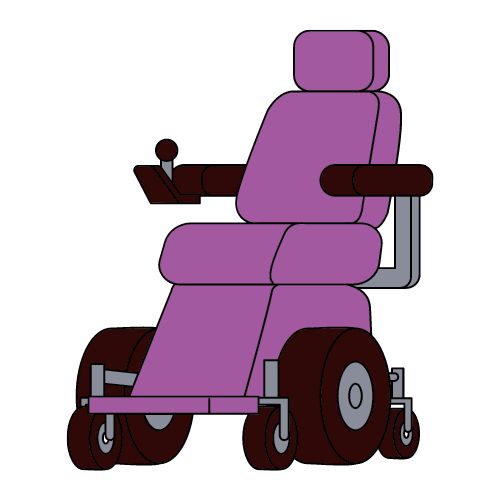How Much Is a Used Wheelchair Worth?
When it comes to determining the value of a used wheelchair, several factors come into play. These factors can include the type of wheelchair, the materials used to construct it, the age and condition of the wheelchair, and any additional features or accessories that may be included.
In this article, I will explore these factors in more detail and provide some guidelines for determining the worth of a used wheelchair
1. Type of wheelchair
The type of wheelchair is one of the most significant factors that determine its worth. Manual wheelchairs, for example, typically have a lower value compared to motorized or powered wheelchairs, which tend to be more expensive. Specialized wheelchairs, such as those designed for sports or for use in rugged terrain, may also have a higher value compared to standard manual wheelchairs.
2. Materials
The materials used to construct the wheelchair can also affect its worth. For example, a wheelchair made from lightweight materials, such as aluminum or steel, may be worth less than a similar wheelchair made from more durable and expensive materials, such as titanium.
3. Age and condition
The age and condition of the wheelchair will also play a role in determining its value. A used wheelchair that is in good condition, with all its parts and components functioning properly, will likely have a higher value compared to a similar wheelchair that is in poor condition or has broken parts. Additionally, the age of the wheelchair can also affect its value, with older wheelchairs generally being worth less than newer models.
4. Additional features and accessories

Finally, any additional features or accessories that are included with the wheelchair can also affect its value. For example, a wheelchair that includes specialized seating or a powered lift mechanism may be worth more than a similar wheelchair without these features.
Determining the value of a used wheelchair

When it comes to determining the value of a used wheelchair, there are several steps you can take. These include:
1. Research the market: Research the market to determine the average price for similar wheelchairs. This can be done online by looking at websites that sell wheelchairs, or by visiting local medical supply stores to see what they charge for similar models.
2. Evaluate the condition: Take a close look at the condition of the wheelchair, including any wear and tear or broken parts. Make a list of any repairs that may be needed, and keep in mind that these repairs will likely lower the value of the wheelchair.
3. Consider the age: Take into account the age of the wheelchair and consider how this may affect its value. Older wheelchairs may have a lower value compared to newer models, even if they are in good condition.
4. Consider the materials: Take into account the materials used to construct the wheelchair and consider how this may affect its value. A wheelchair made from lightweight materials may be worth less than a similar wheelchair made from more durable and expensive materials.
5. Consider the features: Finally, consider any additional features or accessories that are included with the wheelchair and how these may affect its value.
To sum things up, determining the value of a used wheelchair requires consideration of several factors, including the type of wheelchair, the materials used, the age and condition of the wheelchair, and any additional features or accessories that may be included.
By taking these factors into account, you can get a better idea of how much a used wheelchair may be worth, and make an informed decision when it comes to buying or selling a used wheelchair.
I want to know more about the types of wheelchairs and their individual resale values
Manual Wheelchairs
Manual wheelchairs are the most common type of wheelchair. They are operated by the user or an attendant pushing the wheelchair. The resale value of a used manual wheelchair depends on the age, condition, and brand. An average used manual wheelchair can be sold for $100 to $400. High-end manual wheelchairs can sell for more than $500.
Power Wheelchairs

Power wheelchairs are electrically powered and require less effort to move around than manual wheelchairs. The resale value of a used power wheelchair can range from $500 to $3,000, depending on the brand, condition, and age of the wheelchair.
Lightweight Wheelchairs
Lightweight wheelchairs are designed to be easily transportable, making them a popular option for people who are always on the go. The resale value of a used lightweight wheelchair ranges from $200 to $800, depending on the brand, age, and condition.
Sport Wheelchairs
Sports wheelchairs are designed for people who enjoy an active lifestyle. These wheelchairs are built for performance and are made of high-quality materials. The resale value of a used sports wheelchair ranges from $500 to $1,500, depending on the brand, age, and condition.
Bariatric Wheelchairs
Bariatric wheelchairs are designed for people who are larger or have a higher weight capacity. These wheelchairs are built to handle more weight and provide greater stability and support. The resale value of a used bariatric wheelchair ranges from $800 to $2,000, depending on the brand, age, and condition.
It is important to note that the resale value of a used wheelchair can vary widely based on a number of factors, including brand, condition, and age.
Before selling a used wheelchair, it is advisable to research the value of similar wheelchairs in the market. Additionally, it is important to ensure that the wheelchair is in good working condition, as this can affect its resale value.
How to check the physical condition of a used wheelchair?
You need to go step by step when assessing the overall condition of a wheelchair. Here are the components or parts you must check:
1. Frame: Check the frame of the wheelchair for any signs of corrosion, cracks, or bending. Ensure that the frame is sturdy and free from any signs of damage.
2. Wheels: Inspect the wheels for any signs of wear or damage, such as cracks or flat spots. Check the tires for proper inflation and any signs of punctures.
3. Brakes: Test the brakes to ensure that they are functioning properly. Make sure the brakes lock and release easily, and that they hold the wheelchair in place when engaged.
4. Armrests and Footrests: Check the armrests and footrests for any signs of cracks, chips, or damage. Ensure that they are securely attached to the wheelchair and adjust easily.
5. Upholstery: Check the upholstery for any signs of wear or damage, such as tears or stains. Ensure that the upholstery is clean and free from any unpleasant odors.
6. Motor and Battery: If the wheelchair is a power wheelchair, check the motor and battery for proper function. Ensure that the motor is running smoothly and that the battery is fully charged and holds a strong charge.
7. Controls: Test the controls, such as the joystick or buttons, to ensure that they are functioning properly. Ensure that the controls are easy to use and that the wheelchair responds quickly to your commands.
8. Overall Condition: Observe the overall condition of the wheelchair and determine if it has been well-maintained. Check for any signs of neglect or abuse, such as rust, dents, or missing parts.
By following these steps, you can ensure that the used wheelchair you are considering is in good condition and ready to use. It is important to thoroughly inspect any used wheelchair before purchasing it to avoid potential problems down the line.
How do construction materials affect the price of a wheelchair?
The materials used to construct a wheelchair can greatly impact its price. Some of the factors that determine the price of a wheelchair include:
1. Frame Material: The frame material of a wheelchair can range from lightweight aluminum to heavy-duty steel. Lighter materials, such as aluminum, are generally more expensive than heavier materials, such as steel.
2. Upholstery: The upholstery on a wheelchair can be made from various materials, including vinyl, leather, or mesh. Higher-quality materials, such as leather, are more expensive than lower-quality materials, such as vinyl.
3. Wheels and Tires: The type of wheels and tires used on a wheelchair can affect its price. Pneumatic tires, for example, are more expensive than solid rubber tires.
4. Brakes: The type of brakes used on a wheelchair can also impact its price. Some wheelchairs have manual brakes, while others have electric brakes. Electric brakes are typically more expensive than manual brakes.
5. Armrests and Footrests: The type of armrests and footrests used on a wheelchair can also affect its price. Higher-quality materials, such as adjustable armrests with cushioned pads, are more expensive than basic armrests.
6. Accessories: The accessories that come with a wheelchair, such as a push handle, can affect its price. More complex accessories, such as power assist, can add to the cost of the wheelchair.
7. Brand and Model: The brand and model of a wheelchair can greatly impact its price. High-end brands and newer models tend to be more expensive than lower-end brands and older models.
By considering the materials used to construct a wheelchair, you can get a better understanding of why some wheelchairs are more expensive than others. Understanding the materials used can also help you determine if a particular wheelchair is worth its asking price.
Conclusion
The worth of a used wheelchair can vary greatly depending on several factors such as the materials used, brand, model, and physical condition. It’s essential to assess these factors before making a purchase to ensure that you’re getting good value for your money. Don’t be afraid to ask questions and do some research before making a decision. Happy wheeling!

